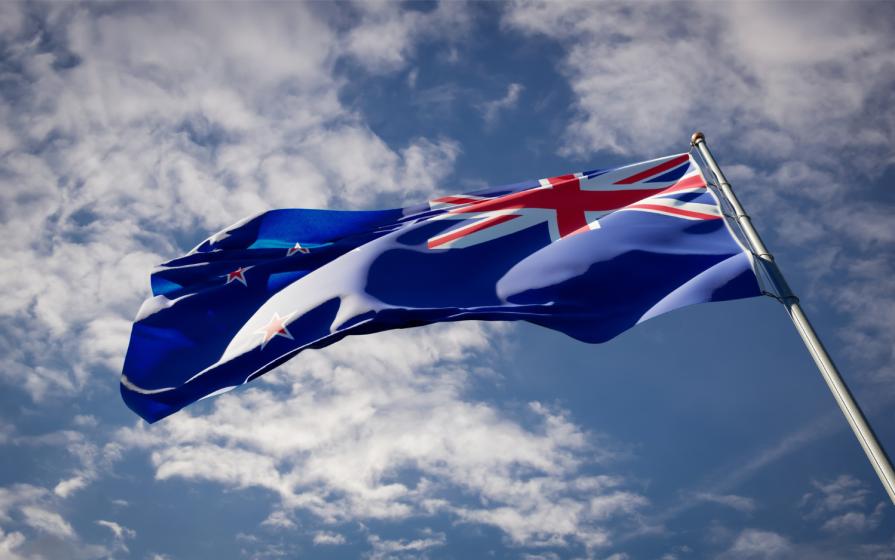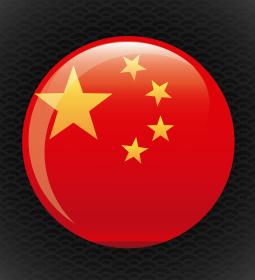It is based on the British naval flag - a blue cloth with Union Jack in the upper left corner, as well as several red and white stars, symbolizing the constellation Southern Cross.
For the first time the flag of these lands appeared in 1834 - five years before the colony was separated from australian New South Wales and transformed into a separate territory with the signing of the Waitangi Agreement in 1840. The flag was approved by a meeting of tribal Maori chiefs, and after the formation of a separate colony, English flags were additionally used. The modern flag was developed in 1869, very soon recognized as national, and in 1902 was appointed, in addition, official.
For the past 30 years, there has been a debate about the need to change it. The point in the discussion was put in 2016, when in a two-stage referendum on replacing the flag in the second round, 56.8% voted for the use of the current colors against 43% who want to change it.

United tribes
The need for its own symbol at sea first appeared in 1830, when a locally built shopping bagboat called the Sir George Murray was boarded by a customs ship near Sydney.
The New Zealand ship went without a flag, because the islands were not yet a full-fledged colony and did not have their own symbols. For good luck or good luck, among the passengers were two noble Maori chiefs - Puoton and Taonaui. The shelling of the ship with them on board and the subsequent capture caused a storm of indignation and the indigenous people.
It became clear that if there is no flag, no one is immune from repeated attacks.
James Bisby convened a conference of tribal chiefs in a place called Waitangi. This gathering was called the Association of Tribes. A little later, they also approved the declaration of independence.
Three versions of the flag were submitted for consideration, all authored by the preacher Henry Williams. By the way, he also translated the Waitangi agreements into English. We chose one of three, which was a modified prapor of the missionary society to which Mr. Williams belonged. Subsequently, these colors became known as the flag of the United Tribes.
In August 1835, the information was published in the official publication of the colony of New South Wales, of which New Zealand was then a part.

Union Jack
After the conclusion of the treaty, the Union Jack was used, although the banner of the tribes continued to be used on land and even some ships at sea. A New Zealand shipping company registered in Wellington used the tribal flag until 1840, when Governor Hobson did not force them to switch to new symbols, which required sending a military team (the action was seen as an intervention to restore state sovereignty).
By the way, Union Jack took precedence over New Zealand flowers of any kind until 1865.
Blue flag
During the Wakato Rebellion of 1863-1864 – also called the New Zealand or Maori Wars – the Royal Forces concluded that they needed their own colonial fleet to fight the Maori tribes. The colony government bought several ships, on which officers of Her Majesty's Fleet were hired. These preparations were paid for from local funds, and control was also local, without regard to the Admiralty.
With the help of the armed vessel "Victoria" a contingent of troops was delivered to the islands, which took part in the bombing of the native forces. While being aware of the need for such measures, The UK was nevertheless seriously concerned about unauthorized weapons.
No sooner had they suppressed the Indian revolt than the British Parliament passed a law called the Maritime Colonial Defensive. This act allowed the colonial authorities to have their own ships, including military ones, but placed them under royal naval control. A year later, the Admiralty clarified that ships and vessels subject to the regulation of the law must carry the royal naval flag of blue color, also bearing a sign or mark indicating a connection with the relevant colony.

New Zealand had neither a coat of arms nor a symbol, so, without thinking slyly, a year later, white letters NZ were added to the blue flag on the instructions of Governor George Gray.
This did not last long - already in 1869, the first lieutenant of the Royal Navy, who served on the ship "Blanche" named Albert Hastings Marchy, proposed to the New Zealand governor Sir Georg Bohun a project of the flag for the colony. This proposal followed a request to Bohun from the Ministry of Colonial Affairs. The proposal, which included the stars of the Southern Cross, received the highest approval in October 1869.
Initially, it was supposed to be used only on government-owned courts. That was until 1901, when the Liberals of the New Zealand administration passed a new flag law, signed a year later by the king.
Thus, vexillological issues were settled once and for all, unification came.














